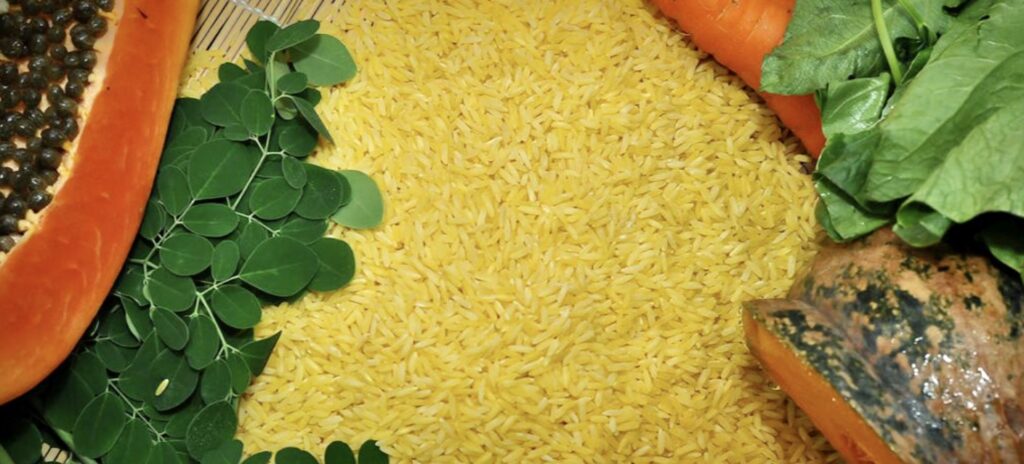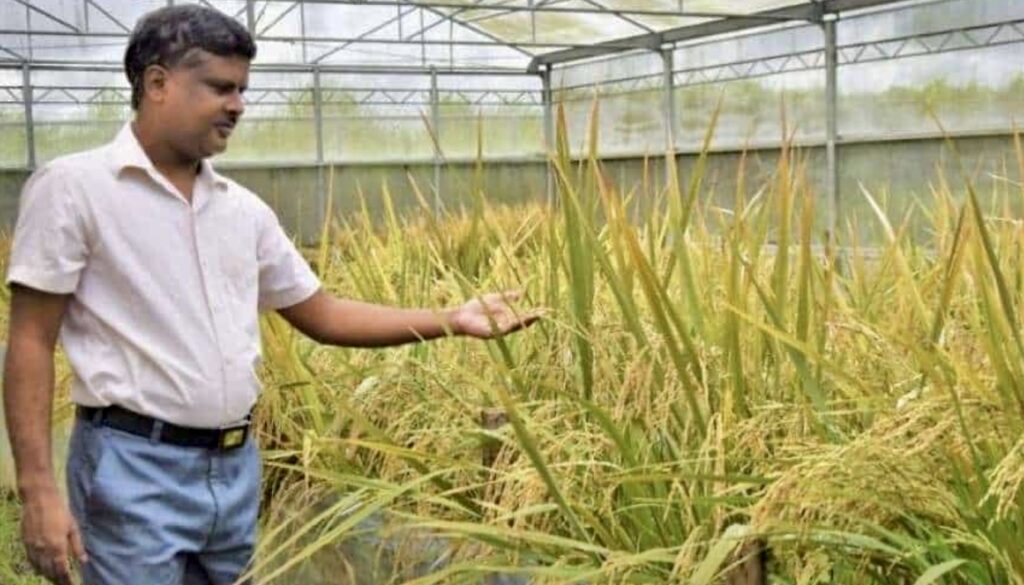Text by Henrylito D. Tacio
Photos: IRRI
“Rice is the principal food for over 60% of mankind,” pointed out the Laguna-based International Rice Research Institute (IRRI). It is particularly important to Asia, where over half of the world’s population lives.
In the Philippines, rice is the staple food, together with fish. “If we did not have rice, our deepest comfort food, we would probably feel less Filipino,” the late food columnist Doreen Fernandez once said.
“One more rice, please!” This call, which rings at dinner time in all restaurants and small eateries, best sums up the eating habits of the typical Filipino to whom eating is a matter of filling up. Studies show a one-half cup of rice can furnish 82 calories of energy, enough to give someone energy to walk 26 minutes.
On average, Filipino consume 114-120 kilograms of rice per capita per year. That’s almost double of the world average of 65 kilograms per capita per year, according to Dr. Eufemio Rasco, Jr., former director of the Philippine Rice Research Institute (PhilRice).
Rice production is among the most valuable sources of income of Filipino farmers. In fact, one-third of the arable land – 10 million hectares – is planted for rice, Dr. Rasco said. About 2.5 million families – that’s 40% of the country’s labor force – depend on rice farming and related activities for their livelihood.
The Bureau of Agricultural Statistics reports that Filipinos spend more on rice than any other food. A survey conducted by the line agency of the Department of Agriculture showed that Filipinos, especially those from low-income households, are depending solely on rice more than ever for their daily dietary energy supply and dietary protein because it remains the most affordable food in the country.
Unknowingly, rice does not only help solve hunger but also “hidden hunger,” the colloquial term for micronutrient deficiency. It happens when people get enough macronutrients (such as carbohydrates, protein, and fat) but not enough micronutrients (vitamins and minerals) for optimum health.
In rice-consuming countries like the Philippines, lack of iron, zinc, and vitamin A are prevalent micronutrient deficiencies. “The cost of these deficiencies in terms of lives and quality of life lost is enormous, and women and children are most at risk,” the Rome-based UN Food and Agriculture (FAO) said in a report.
The FAO report considered the vitamin A status in the Philippines as a “severe subclinical deficiency” which affected children six months – five years and pregnant women.
The National Nutrition Survey conducted by the Department of Science and Technology – Food and Nutrition Research Institute (DOST-FNRI) in 2018 showed that vitamin A deficiency (VAD) and other forms of micronutrient deficiencies continue to be a significant public health problem in PH where 16.9% of children below five years old and 25.8% among children in poorest households are affected.

Golden rice with other vitamin A-rich foods (IRRI) 
The golden rice (IRRI)
In its fight against hidden hunger, IRRI and PhilRice collaborated in conducting more studies on golden rice, which has a potential way to reduce vitamin A deficiency. Golden rice is a new type of rice that contains beta carotene, which is converted to vitamin A when eaten. Rigorous research has shown that just one cup of golden rice a day could be enough to provide an adult with half their daily needs of vitamin A.
The good news is: the Department of Agriculture – Bureau of Plant Industry (DA-BPI) has granted the biosafety permit for the commercial propagation of golden rice in the country.
House Ways and Means Chair Joey Sarte Salceda (Albay, 2nd district) called it a “potential gamechanger for the rice industry in the country.”
Salceda is indeed ecstatic. After all, Albay was Bicol’s best performer for its 93.7% rice sufficiency record in 2014, according to the agriculture department. That year, the province was given the Agri-Pinoy Rice Achievers Award for its rice program; it was Albay’s second outstanding award in a row, according to Philippine Star.
“Rice accounts for one-fifth of the basket of goods for the poor,” he said in a press statement. “And agriculture in general accounts for 22.5% of the labor force, even though it merely contributes 8% to GDP. So, anything that raises value for the sector, such as golden rice, will make a difference.”
The congressman considered the approval as a milestone. “This biosafety approval of golden rice is the first authorization for commercial propagation of genetically engineered rice in South and Southeast Asia,” he pointed out.
“The uniqueness of golden rice lies in its role of bridging the agriculture and nutrition sectors to come up with innovative products that address significant public health concerns in a sustainable manner,” he added.
Salceda, if you care to know, is the author of the Agricultural Biosafety Act (House Bill No. 9265). As such, he knew that the approval of the program really went through rigorous biosafety processes.
The permit was issued on July 21, 2021. It will now allow the DA and PhilRice to proceed with the production of golden rice on a commercial scale for human consumption.
But before that will happen, PhilRice will still have to seek varietal registration by the National Seed Industry Council (NSIC), which approves the registration of varieties based on consistent good agronomic field performance.
“As always, we are committed to ensuring the highest quality of seed for farmers and a safe and nutritious food supply for all Filipinos,” said Dr. John C. de Leon, PhilRice executive director.
According to Dr. de Leon, they will be implementing a comprehensive quality assurance and stewardship program that covers all steps in the chain from seed production to post-harvesting to marketing.
Filipinos eating rice is as old as rice cultivation itself. “The history of rice cultivation in the country dates back at least 3,000 years,” wrote Dr. Gelia T. Castillo, an academician, and national scientist. “The building of rice terraces came a bit later.”
However, it was in 1576 that an account of rice cultivation was recorded. By 1668, someone wrote that “rice usually does not last longer than the time it takes to harvest, since the rest they pay in tribute or sell to get the cash to pay the tribute.”

